Category: 2014 Awards Gallery
ACT Architecture Awards 2014
Vic Chapter Job Notice Board
Vic Chapter Job Notice Board
Institute members are able to advertise positions available at their practices on this page free of charge. Please contact erin.hourigan@architecture.com.au if you have a position available.
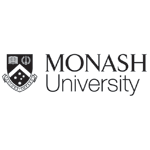
Lead Planning and Design Coordinator
An opportunity exists for a highly organised and self-driven individual to join Campus Design, Quality and Planning (CDQP), within the Buildings and Property division, as a Lead Planning and Design Coordinator. Read More.

Position Available
Partners Hill are looking for an Experienced Architectural Gradute or Architect to join our team. The role is a 6 month contract based in Brisbane, with the possibility to extend. Read More.
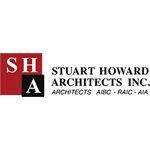
Positions Available
Stuart Howard Architects is a mid-sized Canadian design oriented firm located in a building of its own design in Vancouver’s South East False Creek district. We currently have several projects that are moving into the contract documents phase and have an immediate opening for an Intermediate to Senior Architect, Intern Architect or Technologist with strong contract documents production skills. Read More.

Position Available
Young, dynamic Architectural practice looking for a Senior Architect or Architectural Draftsperson to join our growing project team. Work in a creative and vibrant atmosphere, located in the heart of Fitzroy. Read More.

Positions Available
Decibel Architecture (dB(A)) is an architectural practice established at the beginning of 2016. Over 1 year in, we are looking to add some good people to our happy team of 16. We are on the hunt for a Senior Architect and an Intermediate Architect. Read More.

Position Available
Splinter Society Architecture is seeking an experienced Graduate of Architecture or Registered Architect (5 years minimum) to join our small team, located in Fitzroy. Read More.
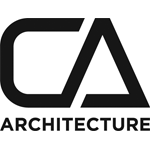
Project Architect
Canny Architecture is an integrated project delivery practice and is seeking a Project Architect with a minimum of 5 years post graduate experience in Australia in multi-residential and/or high end residential projects. Read More.

Project Architect
MAKE Architecture are seeking an exceptional Project Architect with a minimum of 8 years post graduate experience. The right person will be passionate about design and dedicated to delivering projects of the highest standard. Read More.
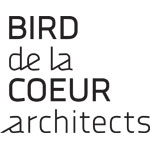
Position Available
Bird de la Coeur Architects specialise in housing, ranging from high-end apartments for the private sector to social housing for government organisations, to one-off houses and aged care. A position is available for an architect demonstrating experience in multi-residential developments from Design Development to Documentation. Read More.

Graduate Position Available
Habitech Systems is seeking a recent graduate with a passion for creating more sustainable housing solutions. Working in a dynamic new modular design space, applicants will ideally have some residential documentation experience, REVIT skills and an interest in innovation. Read More.
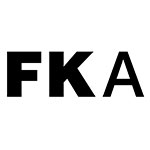
Design Architect
FKA is renowned for producing buildings which are cutting edge in design and incorporate fine technical detail. Talented and experienced Design Architects are invited to submit registrations of interest to join the Melbourne office. Read More.
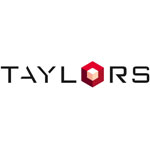
Project Architect
Are you seeking a sea change? Make a difference and use your creative and innovative skills in this 2 year contract assisting in the rebuild of Christchurch. Read More.
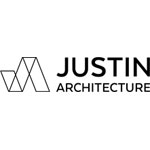
Project Architect
Justin Architecture is a thriving studio specialising in multi-unit residential and boutique commercial work. A position has become available for an exceptional Project Architect with 3-6 years post graduate experience to work on a range of commercial multi-residential, high end residential projects and education projects. Read More.

Position Available
We are looking for an architectural graduate or Architect with at least 1 years post graduate experience. Ideally the applicant will have experience mainly in residential projects, will be familiar with interior architecture and have strong REVIT skills. Read More.
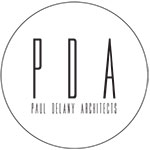
Project Architect | Architectural Graduate
Paul Delany Architects, a long established firm in Malvern East which specialises in boutique residential projects, currently has two employment opportunities. We are looking for a) Registered Architect & b) Architectural Graduate to join our growing team. Email your application letter, CV & portfolio (5MB max) to emily@delanyarchitects.com.au. Read more.

Project Architect
bamford-architects is seeking a Project Architect with strong design skills who has a minimum of 5 years post-graduate experience to join our small studio located in Richmond. Read More.
Livable Housing Australia
Venice Architecture Biennale 2014 – Contemporary Projects
Vmail
From the National President
From the National President
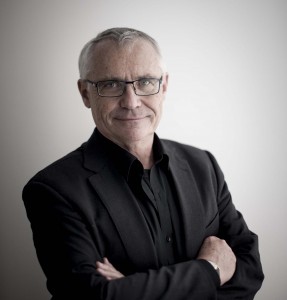
From the National President

National President, Richard Kirk. Photo by Toby Scott
5 Feb 2018
As my first note for the year I wish all our members a great year ahead, one with already a very busy program in place. In addition to our usual program we have two major events to look forward to. The first of which is the Venice Biennale, officially opening in May 2018 and running until November. The Repair installation at the Australian Pavilion is set to be an exciting and engaging exhibition (some seeds have already been sown). Closer to home, the National Conference “Edge” will be held on the Gold Coast 6-8 of June and we look forward to revealing the first round of speakers soon. Discover more here, including the Creative Team behind the program as well as exclusive accommodation deals. Early Bird registration closes 16 April.
Institute Elections
The recent Institute elections attracted a great number of candidates at both the State and National levels. We also saw a great increase in the numbers of members voting which demonstrates a fantastic level of engagement and interest in the Institute as a partner in your practices and careers.
This healthy level of engagement demonstrates that the recent governance changes adopted in 2016 have resonated with our members who now see the Institute as not just an organisation to belong to but one in which they want to be involved in. The governance structure has as its primary focus the needs and ambitions of the members and the level of interest from the membership in the elections reflects this.
I want to thank all the members who volunteered themselves as candidates. I congratulate those members who were elected and to thank the retiring members for their contribution over the last two years. Without the dedication and commitment from our members who volunteer their time many of the services the Institute provides could not happen.
At a National level we saw four members seek election as your Nationally-Elected Councillors. I am pleased to welcome the return of Vanessa Bird (VIC) and to welcome Justin Hill (International Chapter) to the National Council.
I also wish to acknowledge the work of Andrew Broffman (NT) who served as NT President on National Council and as an Institute Board member over the last term. Andrew’s contribution, guidance, and wisdom will be sorely missed by myself and fellow Board members.
Digital Transformation Program
Throughout 2018 new initiatives will be delivered providing improved practical levels of engagement with our members and the community through a transformation of our digital systems. Starting with Acumen, which is already underway, additional packages will roll-out as the year progresses.
National Council has put together a task group to provide the oversight and management of the roll-out and we aim to provide regular updates and to seek your feedback as this major program unfolds. Both National Council and the Board are very focused on this program as it will provide some of the most important operational tools for the members and our largest investment in a single program at approximately $1.4M.
The Digital Transformation Program will position the Institute as the primary professional and business ally for our members. I personally look forward to the end of 2018 when many of the major components will be operational.
Strategic Plan 2018-2020
I encourage you to continue to review this important document that guides the Institute on a day to day basis. It is the result of great deal of effort and excellent input from the membership. All levels of leadership and management rely upon this document from program design through to policy development and advocacy strategies. Read more here.
Richard Kirk
National President
From the National President

National President, Richard Kirk. Photo by Toby Scott
4 Dec 2017
Friends and Colleagues,
This is my last column for the year during what we are all aware is a very busy period as we work towards that well-earned break – which partly explains why this one is 24 hours late!
The Institute has had an incredibly productive year as we continue to implement the transformative governance changes that were supported over 18 months ago. Although we have been working hard internally there hasn’t been too much that is obvious to you as members – until now.
2018 will the year where we will begin to demonstrate what the re-focused Institute will be able to contribute towards your careers and your practices and I want to list just a few of the key initiatives:
Strategic Plan 2018-2020
I am very pleased to have announced the Strategic Plan which you can read more about here. To be released next week, this document is a credit to the many members who contributed and the Institute staff.
Digital Transformation
Over the last 12 months the Institute has improved many of the hard and soft IT infrastructure. We are now in a position to begin the Digital Transformation which is the outward facing engagement we are developing for our members and our community. A renewed digital engagement platform will provide us all with an effective means to communicate and advocate. The target is to have the majority of this work complete by the end of the year and rolled out progressively. Importantly, the program, which is valued at over 1.4M will be funded from funds we have secured through the efficiencies implemented in our operations over the last 2 years.
Acumen (aka Practice Notes)
Acumen has been going through a re-writing phase and is the first module to be released via the digital transformation. Learn more about Acumen here and stay tuned for more information following the release of the upcoming Strategic Plan.
And
Last week the Australasian Student Architecture Congress ‘Agency2017’ was held in Sydney with over 300 attendees. The Institute was honoured to have been able to support the conference as a sponsor and through the support of our events team. Student Conferences are a very important opportunity for the profession’s future leaders to create an event that defines their particular areas of concern and interest. The Institute is very focused on engaging with the next generation of our profession and the student conference and associated events are a great credit to the organisers and attendees. Joshua Morrin (NSW ED) gave a great welcome speech to the students and it was so well received I encourage you to read it here.
As the last message for the year, I want to thank a few people for their great contribution:
– the Institute Staff for their patience and support through the many changes that have been underway. It is great that we now have a more agile and responsive Institute to support our membership and our agenda;
– our Board who do an incredible amount or work on our behalf of our members and I acknowledge them all again here – our 3 Independent Board Members Sarah Richardson, Genevieve Overell, and Giselle Collins, and our members Professor Ken Maher, Clare Cousins, Helen Lochhead, and Andrew Broffman;
– and the National Council and all the committees who make a great sacrifice of their own time on a voluntary basis.
Kind regards,
Richard Kirk
National President
From the National President

National President, Richard Kirk. Photo by Toby Scott
Nov 2017
Last Thursday’s National Architecture Awards ceremony in Canberra was a fantastic culmination of the 2017 Awards program.
One of the most enjoyable parts of my role as President was the opportunity to attend many of the state and territory Awards functions around the country earlier in the year. This provided a rare insight into the diversity of work from around the country and internationally that demonstrates the versatility and depth of the architectural profession.
Observing how architects can make a great impact within the community and where positive legacies are left that well exceed the boundaries of the site and limits of the brief, has been a reaffirmation of the potency of architecture when deployed with skill and dedication.
In recognising design excellence through the Awards program we are also acknowledging the essential role of passionate and supportive clients who are very much a part of the recognition of the awards received throughout the program.
I congratulate all the entrants and their clients for their contribution to the quality of the work honoured last week and earlier in the year.
On behalf of the Institute I would like to thank the National Jury led by Ken Maher for their incredible contribution in time and intellect to the challenge of visiting all of the 72 strong shortlist over a two week period from as far as the Daintree to the Pilbara.
I would also like to thank the Institute staff for their tireless efforts in producing such a successful Awards program, over twelve months in the making.
Read all about the 2017 National Award winners here.
Although the Awards program is one of most visible advocacy programs, it is certainly not the only significant undertaking of the Institute in furthering the cause of the profession and supporting our members.
I often refer to the iceberg analogy where much of the work we do is hidden from view. A lot of work happens behind the scenes – and it is critical work in a profession so closely impacted by State and National legislation.
Over any year our Chapter and National Committees produce numerous submissions and undertake media programs to ensure government policies and programs are well informed and have a focus on the public interest when it comes to articulating the importance of making our cities and towns equitable and sustainable.
Through our new National Policy Committee the Institute’s policies are being refreshed and will expand on the work already completed in 2017 including our new Multi-residential Standards Policy, Work Experience and Internships Policy and our submissions to the Finkel Review and Senate Enquiry into non-conforming building products.
In addition to these, each of the local Chapters have prepared their own submissions in the last year covering diverse planning and procurement issues.
Although the message is a dry one, I wanted to use this opportunity to convey the importance of this work as a part of our complete advocacy agenda for the profession and that it is produced with the assistance of your fellow members on a voluntary basis.
The Institute will shortly be launching our new three-year Strategic Plan, an extension of the hard work already undertaken over our recent journey of renewal and transformation.
The Institute is now more focused on delivering the professional leadership and services that prioritise your needs as practitioners. To that end we will need a much greater engagement and involvement from our members to ensure we are an essential partner in your practices and careers.
To continue the transformation, we need greater support and more resources. There is an opportunity for the Institute membership to grow substantially – whilst we have great engagement with the smaller practices– it is generally the larger practices (which employ the largest segment of the profession) that participate the least in the Institute.
In essence, we have set the Institute on a trajectory of reform and capacity building, with the members and the profession as its focus – we think it is timely for our largest stakeholders to reconnect and re-engage to help us continue our great legacy as an important institution.
The Institute is one of the oldest institutions within the Country. This year for example, the Victorian Chapter celebrated 161 years, Queensland 129 years and NSW 146 years. It is this longevity that brings clarity to us that the Institute is a worthwhile legacy and the Board, together with the National Council, have been focused on how to guarantee the Institute is well managed to ensure we are able to plan well into the future.
I personally look forward to building with you an Institute that is a strong voice for architecture and an Institute that makes a stronger profession for architects.
Richard Kirk
National President
From the National President

National President, Richard Kirk. Photo by Toby Scott
Sept 2017
UIA 2017 Seoul World Architects Congress
The Institute has a long and proud history of international engagement through active Memorandum of Understandings with the peak architecture bodies around the world and our membership with the International Union of Architects (UIA). I have just returned from the UIA’s 2017 Seoul World Architects Congress, a gathering of around 30,000 participants.
The UIA, like the Institute and many other peak professional bodies, has undergone a period of rejuvenation and re-alignment. This process will help position the UIA as an effective organisation in the promotion of architecture on a global scale, an activity that will benefit all member countries and provide a strong advocacy platform for our own agenda. Currently, there are 120 member nations and a vigorous plan to grow this in order to strengthen the power and influence of architects and the benefits of architecture globally.
Our continued involvement will enable the Institute to draw on the collective knowledge and work across a number of shared activities and policies and provide international benchmarks to further promote best-practice goals and facilitate international work opportunities for our members.
Personally, and on behalf of the Institute and our members, I would like to acknowledge and thank Peter Mould and Louise Cox as our representatives for their tireless efforts in supporting the UIA and positioning Australia as a leader through their participation in committees, development of policies and reviews.
Accreditation procedures
Following on from my last update regarding the Australian and New Zealand Architecture Program Accreditation Procedure (ANZ APAP) and our concerns raised during the recent review, I’m pleased to advise that our ongoing consultations with joint-owners AACA have progressed positively.
The Institute is a significant stakeholder and custodian in accreditation and has been instrumental in the development and delivery of the procedure since its inception and we will continue to champion international benchmarking and validation of the Australian architectural education and accreditation systems. The Institute and AACA have reached agreement on a future direction and more detailed advice will be issued to your shortly.
2017 National Architecture Awards
Two weeks ago the shortlist for the National Architecture Awards was revealed. I would like to offer my congratulations to all those who made the list. The 72 shortlisted projects are exemplars, demonstrating the essential and decisive role architects play in making our built environments enriching and sustainable.
As the culmination of a year-long program of rigorous judging by peers, the National Awards are the ultimate celebration of what our profession can achieve. Join us in Canberra on Thursday 2 November as we celebrate the winners of the 2017 National Awards.
Richard Kirk
National President
From the National President

National President, Richard Kirk. Photo by Toby Scott
August 2017
Strategic Plan Survey
Last month we asked members to participate in our Strategic Plan consultation process. Following extensive workshopping in the first half of the year, National Council along with the Board and Committee chairs had identified nine key priorities for the Institute to undertake over the next three years. Members then had the opportunity to rank these initiatives in the order that was most important to them.
Thank you to all those members who took the time to engage with this process, we had an overwhelming response and this feedback will form a valuable part of the Strategic Plan 2018 – 2020.
Here’s what you said was most important:
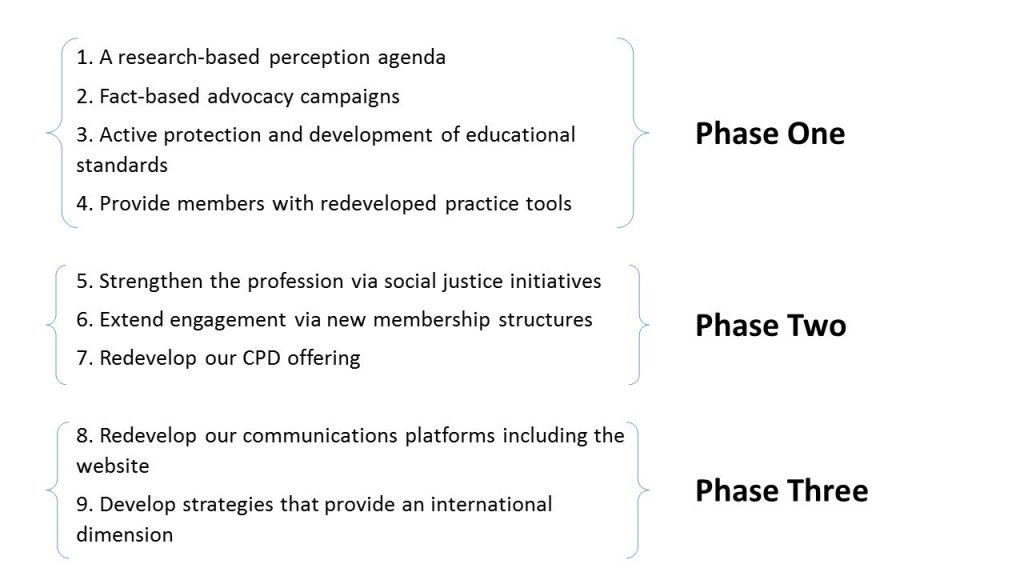
National Council, the Board and Executive team have reviewed the results and have grouped these priorities into three achievable phases for implementation. We look forward to updating you further once our new Strategic Plan has been finalised.
Accreditation
The Institute is committed to the highest quality of architectural education and has actively pursued this agenda through dedicated involvement in the accreditation of Australian and New Zealand architecture programs for over 20 years.
The Institute is committed to ensuring an accreditation system that supports educators, regulators and the profession and retains international validation, as well as an accreditation system that recognises that a comprehensive architectural education is inclusive of, but also greater than, the competencies defined by the National Standard of Competency for Architects – a system that strives for excellence not just minimum standards.
Accreditation ensures that university programs provide a suitable pathway to registration as an architect and provides programs with expert peer review. Professional accreditation is also required to maintain government funding for Masters level students.
Architecture is regulated by the various state and territory architect Act and the individual architect registration boards are the bodies that accredit architecture programs in their respective jurisdictions. In order to maintain a nationally consistent procedure, this professional accreditation of Australian Schools of Architecture is undertaken as an independent process in accordance with the Australian and New Zealand Architecture Program Accreditation Procedure (ANZ APAP), which is jointly owned by the Institute and the Architects Accreditation Council of Australia (AACA).
Throughout a recent review of the ANZ APAP, the Institute raised significant concerns and recommendations which unfortunately have not been addressed. In April this year, the Institute withdrew from the review process as we had lost confidence that key stakeholder concerns were being appropriately considered but remained joint owners of the ANZ APAP and actively pursued mediation opportunities with the AACA.
The AACA have, without the Institute’s agreement as joint-owner of the intellectual property of the procedure, assumed secretariat of the ANZ APAP and pursued implementation of the review’s Final Report which they published in June without being sighted by the Institute.
We do not believe that the recommendations of the Final Report support our criteria and standards which are in the best interest of members and the profession. We are continuing to seek mediation with the AACA and maintain our rights as the profession’s joint ownership of the procedure and associated intellectual property.
If you want to be a part of our campaign to improve the future of the profession through strong educational standards then please enter your details here.
Richard Kirk
National President
From the National President

National President, Richard Kirk. Photo by Toby Scott
July 2017
International Chapter Awards
Last Friday, I had the pleasure of announcing the winners of the 2017 International Chapter Architecture Awards at a presentation evening in Singapore attended by Australia’s High Commissioner to Singapore, His Excellency Bruce Gosper.
The Awards coincided with the International Chapter’s annual face-to-face meeting and was an excellent opportunity to engage with members as well as our counterparts from other Institutes around the Asia Pacific region (and beyond). The work and influence of Australian architects in the broader region are becoming increasingly important and it is great to see how well our talents are being received and utilised.
Strategic Plan Survey
Thank you to all those members who took the time to rank our proposed initiatives for our new three-year Strategic Plan. Your feedback forms an important contribution to the next phase in the development of the plan which will be finalised later in the year. We will keep you updated as the Strategic Plan 2018-2020 progresses further.
Non-complying building products
Last week the National Practice Committee met, progressing discussions around non-complying building products and how architects can be more involved in the solution for improving public safety. The committee are currently preparing advisory notes for architects that we will be making available shortly.
Institute staff with the assistance of the National Practice Committee are also currently preparing our formal submission to the ongoing Senate enquiry into non-conforming building products. The Senate’s Economics Reference Committee, chaired by Senator Chris Ketter, held their first public hearing in Melbourne on Friday 14 July, with a second hearing taking place in Sydney on Wednesday 19 July.
Finkel Review
The latest COAG Energy Council meeting, chaired by Federal Minister for the Environment and Energy Josh Frydenberg, was held in Brisbane on Friday 14 July. The group discussed the Coalition’s proposed adoption of 49 of the 50 recommendations but are still working through the adoption of a Clean Energy Target, a recommendation the Institute fully supports.
The Institute is continuing to lobby for the demand side of the equation to be considered especially through the regulation of better design. With rising electricity prices putting pressure on households and businesses, smarter design in the building sector is critical to achieving energy savings.
Richard Kirk
National President
From the National President

National President, Richard Kirk. Photo by Toby Scott
June 2017
Product compliance
The terrible and devastating fire at Grenfell Tower in London is a timely reminder of the great risk fire still presents. As our cities become dense and the buildings larger and more complex ensuring the codes are robust is critical, as well as enforcing compliance by all building professionals. The Building Code of Australia imposes requirements to design and construct buildings with multiple measures for safety, including use of fire sprinklers, fire-resistant construction, adequate means of escape, and smoke detection to name a few. Adherence to codes and standards is essential.
Safety is our paramount concern in all matters of building construction and the Institute for some time has being lobbying our state/territory and federal governments on the risks of non-compliant materials and their widespread use in the construction industry. We will be liaising directly with the RIBA to gain a greater understanding of the cause of the recent fire and to closely monitor what regulatory improvements will be sought.
Chapter Awards
The Chapter Awards programs are well underway. As one of our most important advocacy programs, the Awards provide a great measure of the profession and it is wonderful to see the standard of the work produced. I congratulate the recipients of State Awards in South Australian and Northern Territory and I am looking forward to attending the Queensland, Victoria and NSW ceremonies over the next two weeks.
International relations
More than ever our relationships with our fellow Institutes is critical. The issues we all face are very similar and often identical, such as regulation, procurement, education and sustainability. There is an incredible opportunity for us to start to share resources between us to extend and refine our advocacy but also with respect to member services to ensure the Institute is an effective partner to your business and for your careers.
The Institute currently has MoUs with the Malaysian Institute of Architects (PAM), Singapore Institute of Architects (SIA), New Zealand Institute of Architects (NZIA), Royal Institute of British Architects (RIBA), American Institute of Architects (AIA) and Royal Architectural Institute of Canada (RAIC) and we will be exploring additional opportunities with other organisations.
Richard Kirk
National President
From the National President

Photo by Toby Scott
May 2017
At the National Architecture Conference, PRAXIS, earlier this month, there was a particularly poignant moment when the energetic Indian architect Rahul Mehrotra observed, ‘As architects we face a complete misalignment [between] our sphere of concern [and] our sphere of influence.’ I believe this goes to the heart of the challenge facing the Institute and the profession, and is certainly something that other institutes internationally are reflecting on.
In the public debates facing our nation, from energy security to housing affordability, architects are an underutilised resource.
Architects possess a unique spatial sensibility, we understand how to achieve the best outcomes for our cities, towns and communities. Building awareness of everything our profession can contribute is a key task for the Institute moving forward and to convince policymakers of the immense benefits in harnessing our skills and broadening the debate.
So how do we deploy our influence to ensure that our concerns are understood and acted upon by those who are responsible for public policy in our built environment?
We have undertaken considerable work these past 12 months in reviewing our policies to strengthen our position as an advocate for the profession and more broadly for community benefit. And this work will continue to grow and develop into a long term engagement strategy.
Recently, National Council adopted four new policies (as reported in this edition of E-news) on affordable housing, Indigenous housing, multi-residential standards, and work experience and internships – and these along with our other refreshed policies, will form a solid base from which we can speak with a stronger voice.
Housing was the centrepiece of the recent federal budget and while the focus here has been on increasing supply to reduce barriers to home ownership, we will be seeking to broaden the debate to include a discussion on the benefits of good design. We don’t just need more homes, we need better homes and planned public spaces that are enduring and break out of current market constraints. Read Ken Maher’s address to Members of Parliament on housing affordability at Parliament House in March here.
Despite energy security featuring high on the political agenda this year, the focus has remained solely on generation. The failure to address energy demand and consumption is a glaringly obvious missed opportunity, when for decades this profession has promoted the importance of building sustainably and how that can occur without a cost impost.
Unfortunately climate change, despite its obvious connection to energy use and consumption, did not rate a single mention in any of the budget papers and announcements. This is where the Institute can play a part in expanding the public discussion to be more rounded and complete. I look forward to your support in expanding this conversation in the public realm.
At our Annual General Meeting last week, we received overwhelming support to adopt a Plain English form of constitution document that is typical of modern not-for-profit organisations. The new Constitution replaces the outgoing Memorandum and Articles of Association. You can view the new Constitution here.
This new document is easily understandable and best practice for this type of organisation. In addition, it also reflects the Institute’s public interest purposes to make the world a better place through architecture and to educate the public about the value of good architecture both to individuals and to society at large. The Institute will now consider an application to the Australian Charity and Not-for-profit Commission (ACNC) seeking formal registration and public recognition of the Institute as a not-for-profit. Although registration with the ACNC cannot be guaranteed, securing formal registration as such would deliver tangible benefits to the Institute as an organisation.
It is a great honour to be elected National President of our Institute and as I begin my term I would like to acknowledge the immense contribution made by my predecessor, Ken Maher. Ken devoted an amazing amount of time to the role and provided excellent leadership in what was a challenging period during the on-going transformation of the Institute. On behalf of the membership, I thank him.
Richard Kirk
National President
From the National President
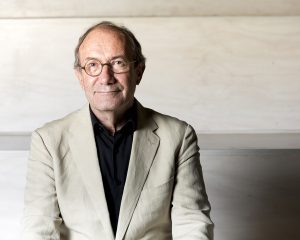
April 2017
Next week is our annual opportunity to get together as a profession for the 2017 National Architecture Conference PRAXIS, which features a rich line-up of international and local talent along with a joint Super Session with the Planning Institute of Australia; the announcement of the 2017 Gold Medal; an extensive fringe program and much more.
If you haven’t already registered, there is still time, visit the website for all the details and I look forward to joining many of you in Sydney for the Opening Party on the 4th followed by two days of stimulating engagement – not to mention all the fringe activities.
With cities central to much current public debate, the Super Session will be an interactive provocation exploring the future of our cities from holistic strategies through to the experiential exploration of how planners, urbanists and architects can collaborate to be more effective in engaging with our communities and politicians to secure a better future. Social media and 24/7 connectedness has fundamentally changed the way individuals engage and express views on these contemporary issues. The big question is how can the professions strengthen our collective influence to focus the debate? This discussion will be facilitated by Tina Perinotto from The Fifth Estate, international and local participants include Rahul Mehrotra, Sylvia Karres, Prathima Manohar, Julian Bolleter and Graham Jahn.
On the critical issue of cities, the Institute welcomes the recent announcement by Angus Taylor, the Assistant Minister for Cities and Digital Transformation, that he has formed a Cities Reference Group to provide innovative, expert advice to support delivery of the Australian Government’s Smart Cities Plan. The Smart Cities Plan sets out the Australian Government’s vision for our cities and will guide action across portfolios to deliver better outcomes for our cities and the people who live in them. It also seeks to bring together all levels of government, working with local communities and businesses, to identify what we need to do today so that our cities succeed in the future. The Reference Group includes representatives from across industry, the research community and non-government groups and I have been invited to represent the Institute and will be advocating the importance of architecture, sustainability and public realm design.
Last week we issued the Notice of AGM and the 2016 Annual Report along with details of a special resolution that will be tabled for vote.
Following on from last year’s successful amendments to our Memorandum and Articles of Association (M&AA) which saw the introduction of a Board of Directors, we are proposing additional changes that will further bring our Constitution in line with best practice governance.
The amended documents are written in plain English so they are simpler and easier to understand and be used. Amendments do not reduce the current rights and interests that members have in the Institute and include changes that better reflect our activities and support registration for a tax-exempt charitable status with the Australian Charity and Not-for-Profit Commission. The proposed constitutional documents are fully compliant with the Corporations Act 2001.
This special resolution to amend the Institute’s current M&AA under Article 87 presents the opportunity for every Corporate Member to use their voting rights to adopt a better Constitution and take another step towards a more effective and transparent Institute. I encourage you all to visit the website and review the proposed changes and make your vote count.
Education has been an integral part of the Institute’s core function as the peak body for the profession and drives our current direction as one of our key strategic pillars. The Institute has been involved in accreditation of tertiary level architecture programs since the inception of accreditation, and undertakes this jointly with all State and Territory Registration Boards through the Architects Accreditation Council of Australia (AACA).
In 2016 the Institute agreed to bring forward the scheduled 2018, and much needed, review of the accreditation procedures (known as the ANZ APAP) in response to a request from other participating members. Subsequently, we provided a representative to the ANZ APAP Review Group, which undertook the first stage review. The Final Report was released in June 2016, however due to significant concerns regarding a number of the recommendations, our National Council was unable to sign off on the report.
The Institute argued strongly that a further period of review was required prior to implementation of the revised procedure to address the concerns regarding the recommendations. The ANZ APAP Development Group, with a membership of five representatives from key stakeholders including the Institute, was formed with secretariat support provided by the AACA. At our recent National Council meeting, the Institute resolved to withdraw from the Development Group on the basis that it could not support the outcomes of the review process. We remain committed to supporting effective accreditation reform, this includes continuing to manage and deliver the current ANZ APAP procedures, until a mutually acceptable revision is agreed.
This column is my final as National President. On 16 May I will be handing over to my friend and colleague Richard Kirk. I know Richard will provide outstanding and incisive leadership and I will be delighted to support him and fellow national councillors in my role as Immediate Past President.
It has been a demanding yet rewarding experience, representing all of you who make up our diverse and committed profession. I certainly could not have done it without the warm friendship and support of my colleagues. I am in awe of the dedication and time so many architects selflessly give to our Institute and would also like to sincerely thank Chief Executive Officer Jennifer Cunich and the staff at the Institute, who work with enthusiasm supporting the interests of members through delivering an extensive program of activities. Thank you also to all my fellow councillors and our new board, to our generous corporate partners and to you our members, as we work together on strengthening our Institute.
Ken Maher
National President
From the National President

March 2017
Housing affordability is currently a hot topic for good reason. We cannot have vital and sustainable communities without diversity, and we cannot achieve real diversity without equity. Motivated by the need for stronger advocacy from our profession, and the absence of design in the recent debates, last week the Institute hosted a housing affordability breakfast briefing at Parliament House in Canberra to examine the issues of density, design and the challenges ahead.
The audience included Assistant Minister to the Treasurer, the Hon Michael Sukkar MP, Shadow Treasurer Chris Bowen and Shadow Minister for Housing and Homelessness Senator Doug Cameron, along with more than fifty Members of Parliament, Senators and Staff from all political parties. It was reassuring to see so many of our federal parliamentarians join our National Councillors and Executives to hear about the invaluable role architects can play in addressing one of the nation’s most pressing problems.
Our aim is to establish a stronger voice for the profession on key issues we face, and this event demonstrated our credibility and passion for public responsibility architects bring to the table. This important high-level advocacy on behalf of the profession on a range of issues will become an annual event.
While there can be no doubt that affordability is a complex issue, with significant impacts on our economy, changing family profiles and changing values, there are certainly valuable unrecognised contributions to be made by the architectural profession through design innovation.
We need to make better use of existing stock through inventive retrofitting to suit current demographics and there are many exemplary examples of this already available. We need to take into account access to employment, education, services and facilities. We need communities where there is less reliance on cars, better public transport connections, where density in the urban environment is well designed, where infrastructure investment supports strategic planning and where communities are connected and brought together in a way that enhances liveability, sustainability and productivity.
What is clear is that it requires a coordinated response from governments, developers and industry. Agreements between commonwealth, state and territory governments, are an important start, promoting investment in affordable housing. However it is clear that with the depth of the current housing challenge it is time for a major policy overhaul with all measures on the table including stamp duty, land tax, capital gains tax, and negative gearing to ensure policy levers are effective. Carefully calibrated incentives will also be necessary to the development sector in return for the delivery of housing diversity and affordability, along with incentives to encourage compliance beyond the minimum requirements. Planning regulations also need to be modified and harmonised to introduce clear targets for social and affordable housing, including more flexible housing types and multi-generational occupancy.
You can read my full address here. Assistant Minister to the Treasurer, the Hon Michael Sukkar MP, responsible for the government’s housing affordability strategy also addressed the event outlining the steps the Turnbull Government is taking to address the housing challenge (you can read his speech here).
Architects are optimists, we want to make a difference – we want to change the world. We want it to be a better place as a result of our efforts. We deal with the physical and experiential and for us and the Institute, the most important thing now is to translate this optimism into action – otherwise there will be no real change.
Change will certainly be on the agenda at the National Architecture Conference: PRAXIS in Sydney, 4-6 May. The conference is a once a year opportunity for the profession to come together, to be inspired and to challenge ourselves. It is an incredible chance for us to hear from leaders, both experienced and emerging, from beyond our shores and closer to home – also to earn CPD points. While this year the ticket price is higher, this reflects the higher Sydney costs, and includes the opening party. It is also worth noting the tickets are competitively priced for professional events of this calibre, including the PIA conference being held in parallel.
Our full complement of international speakers – Eva Castro, Rahul Mehrotra, Winy Maas, Sheila O’Donnell and John Tuomey, Vo Trong Nghia and Anupama Kundoo – will be focusing on their design ethos, process, and modes of practice as evidenced by the projects they will present. We are in the process of releasing details of the impressive list of local speakers also exploring the notion of PRAXIS – their work and the thinking behind their work– led by Australia’s most prominent architect, Glenn Murcutt and includes Megan Baynes of Room 11, Penny Collins and Huw Turner of Collins and Turner, Emma Williamson of Coda, Rachael Nolan and Patrick Kennedy of Kennedy Nolan, Rodney Eggleston of March Studios as well as John Wardle and Neil Durbach presenting the unusual collaboration of JWA and DBJ on a new gallery in Chippendale for Judith Nielson. A rich architectural feast!
It’s only five weeks until the conference so I urge you to book now to make the most of discounted accommodation offers and I look forward to seeing you at the ICC, Sydney.
Ken Maher
National President
From the National President

Just last week ballots closed for our 2017 elections and I’m delighted to congratulate Suzanne Hunt who has been elected our first female WA Chapter President and nationally-elected Councillors Prof Helen Lochhead (NSW) and Adrian Fitzgerald (Vic) on their success. They will join Yvette Breytenbach (Tas), Mario Dreosti (SA) and Andrew Nimmo (NSW), who were all elected unopposed as Chapter Presidents earlier in the year, and SONA President Jemima Ninnes on National Council from our next meeting in March. We look forward to welcoming them on board, and their contribution in ensuring your Institute is effective in supporting members, and stays focused and relevant to the profession’s and the broader community’s interest which we serve.
I’d also like to warmly thank our outgoing National Councillors and Chapter Presidents – Philip Griffiths (WA President – who has also served on our newly constituted Board), Shaun Carter (NSW President), David Homburg (SA President), Brad Wheeler (Tas President), Sue Dugdale (nationally-elected) and Cale Black (SONA President) – for their tremendous efforts and hard work, enthusiasm and friendship during their time on Council. Our Institute can only thrive and be truly representative with engaged members, and these incoming and outgoing Councillors, along with our many other volunteers are our lifeblood.
On Friday night at the annual Queensland President’s Dinner, Catherine Baudet was announced as inaugural recipient of the Institute’s Paula Whitman Leadership in Gender Equity Prize, named in honour of the late Queensland architect, university professor and gender equity advocate, Paula Whitman. On behalf of the architecture community and the Institute I’d like to congratulate Catherine on her outstanding leadership over the last three decades in supporting women in the profession of architecture.
Catherine is an exceptional role model and mentor for many young and emerging architects and she is a most worthy recipient of this significant national prize. As the jury noted:
‘In 1983 Catherine was the co-founder of Women in Architecture Queensland and she was the president for a number of years. In 1984 WIA held the first exhibition of the work of women architects in Queensland. The exhibition highlighted and promoted the work of 40 women architects. Catherine was the first person to involve Paula Whitman in the broader issues facing women working in the architectural profession. Catherine inspired Paula Whitman on a path of investigative research which subsequently led to the landmark 2005 study Going places: The Career Progression of Women in Architecture. Catherine continued to support Paula Whitman through her career and she was a mentor for the duration of this study.’
For architecture to realise its full potential as an agent of change, particularly at a time when there is ever-increasing interest in the quality and sustainability of the built world – and consequently competition to be heard – I believe as architects and advocates we need to effectively articulate the value we can contribute as a profession to a better future through informed design. To do this it is important we explore and define this value collectively to understand and ensure our work has meaning and can enrich the human experience – to connect our ‘thinking’ and ‘doing’.
This has been fellow conference curator, Prof Helen Lochhead, and my inspiration as we prepare for the 2017 National Architecture Conference, taking place 4-6 May in Sydney, with the focus on ‘PRAXIS: Process.Propositions.Production’. Our interesting range of international speakers – Winy Maas, Eva Castro, Rahul Mehrotra, Vo Trong Nghia, Sheila O’Donnell and John Tuomey with more to be announced soon – have been selected for the diversity of their modes of practice, locations, typologies and methodologies, yet all engage in reflective practice so critical to the value of their contribution. Our international speakers will be joined by similarly aligned local practitioners exploring their own work. Through the various presentations of the work itself, the thinking behind the work and the process of working we will be exposed to stimulating and intimate insights. By exploring this link between praxis and values we can generate an understanding of the potential of the power of meaning in architecture; morally, socially, functionally and, most critically, experientially.
With these ideas at the core of our program we hope you will not only be inspired by the exceptional works and thinking of these speakers but also stimulated to reflect on your own values and thinking in architecture. Our National Conference affords a great opportunity to engage with colleagues in the celebration of architecture and through this interaction better understand our role and our place. This inspiration and reflection, as architects, educators, students and interested professionals, may also equip us to be better positioned to promote and enact our roles as agents of change.
Ken Maher
National President
From the National President

30 January, 2017
Welcome to 2017, an exciting year for our Institute with an interesting program of activities, an ambitious agenda to give architecture a stronger voice, and more access and support to members through enhanced digital access.
Last Thursday, five outstanding members of our profession received Australia Day Honours for their dedication to the profession and the community. On behalf of the Institute I would like to congratulate the late Alastair Swayn who was appointed an Officer of the Order of Australia (award w.e.f. 23 May 2016); John McInerney, Robert Morris-Nunn and Aija Thomas who were made Members of the Order of Australia and Alan Synman who received a Medal of the Order of Australia.
March is the first meeting following our current Council elections. I want to welcome and congratulate all Chapter Councillors already elected. Congratulations also to Yvette Breytenbach (Tasmania), Mario Dreosti (SA) and Andrew Nimmo (NSW) who were all elected unopposed as Chapter Presidents. The elections for nationally elected National Councillors, the remaining Chapter Councillors and Chapter Presidents will open on the 31st January, so I encourage you all to exercise your democratic rights and vote, as unlike in politics voting is not compulsory – maybe we should consider that! Enormous thanks are due to our outgoing National and Chapter Councillors, and all candidates for the elections this year. Our Institute is dependent on active engagement of members for its culture, relevance, and effectiveness, so we are indebted to you all.
Preparations are well underway for the major event of our calendar this year – the 2017 National Architecture Conference in Sydney, 4-6 May – and we will be launching the stimulating program soon. This year sees the return to a more classic format with a strong focus on design, exploring the work of exceptional practitioners from around the globe with intensive presentations as well as a super session on the future of cities in collaboration with PIA. The theme of ‘PRAXIS: Process. Propositions. Production.’ will allow exploration of significant projects through the intentions, modes of practice, and their making. International and local speakers have been selected who represent thoughtful, relevant and distinctive ways of practicing from a range of locations and cultures, engaging in the academies as well as projects. A stimulating fringe program will allow exploration of Sydney projects and interaction with local architects. It is the annual opportunity to connect with colleagues from around the country, so I hope you are able to join in, and book early to be part of this celebration of architecture and the limited places in the fringe events.
Following the outstanding success of our participation (The Pool) in last year’s International Architecture Exhibition – la Biennale di Venezia, which was our most visited exhibition ever – you will note in the recent invitation for expressions of interest for the role of Creative Director (or curatorial team) for the 2018 Exhibition. Submissions close on 26 February. An exciting difference for this Biennale is the recent announcement of Yvonne Farrell and Shelley McNamara of the Irish practice Grafton Architects as the 16th curators of the Venice Architecture Biennale in advance of our selection, thus allowing applicants to take into account the overall agenda for the Biennale in positioning our pavilion’s exhibition.
In the recent announcement, President of the Venice Biennale, Paolo Baratta said:
‘The exhibition curated by Alejandro Aravena…underlined how important it is that a qualified demand on the part of individuals and communities be met by an equally effective response, thereby confirming that architecture is one of civil society’s instruments for organising the space in which it lives and works. Along these lines, Yvonne Farrell and Shelley McNamara will continue to address the same theme but from the point of view of the quality of the public and private space, of urban space, of the territory and of the landscape as the main ends of architecture.’
‘The curators, who are well-known for the refinement of their work, are also known for their intense didactic activity and their ability to involve and fascinate new generations,’ added Baratta.
Farrell and McNamara won the Silver Lion at the 2012 Biennale for their project for UTEC at the University in Lima, Peru which also recently won the inaugural RIBA International Award.
It promises to be another outstanding demonstration of the significance and value of architecture as agency, extending the agenda to embrace landscape and urbanism. I look forward to some excellent proposals for the Australian exhibition.
Ken Maher
National President
From the National President

National President Ken Maher. Photo: Brett Boardman
5 Dec 2016
As 2016 draws to a close, we can reflect positively on what has been a year of great change and renewal for the Institute. In May we welcomed Jennifer Cunich our new Chief Executive Officer to the team, and also this year our three new independent Board members Giselle Collins, Genevieve Overell and Sarah Richardson.
I particularly extend my sincere thanks to Jennifer and her team for the incredible work they have accomplished this year, from implementing the governance changes introduced by National Council, to reviewing our business model and our policies, and to creating a stronger internal structure to better support members. This year National Council and the Board have effectively managed many challenges and I thank them for their continuing dedication and support.
You no doubt will have seen that the time has come to renew or join for 2017. Your Institute is focused on providing relevant member services, raising the bar for education and delivering powerful advocacy and we want all architects and architectural professionals to be part of a stronger, more effective voice for the profession.
To assist you in everyday practice we have included Acumen, our online practice advisory notes, as part of all Member Level 1, Affiliate Level 1, Graduate and Student memberships. The Institute’s Acumen Content Review Panel have been hard at work, continually updating and adding new notes to provide relevant and up-to-date resource material.
In 2017, we are also excited to be upgrading our IT platforms to better assist staff in supporting members and providing a more user-friendly experience for members around the country. We have begun this vital project, accepting the need to make a modest increase in membership fees for 2017 to allow this investment in better digital platforms, while maintaining no fee increase for retired members.
At our recent National Council meeting, which included a strategic planning workshop, we initiated the renewal of the National Practice Committee and established an interim National Policy Committee to ensure involvement from the membership and chapters in supporting our strategic pillars of Membership and Advocacy respectively. We have also begun work on a new Role Model program modelled on a successful RIBA project and an Ambassadors program to encourage community and political leaders to be independent champions of the value of architecture in civil society.
Architects contribute significantly to the quality of the built environment, yet there is a much greater potential if better supported by governments, the industry and community leaders. We need clear messages and a stronger voice, and your National Council is committed to increasing this voice through supporting Jennifer and her executive team in developing a strong Communications and Advocacy plan for 2017. We are also focused on membership – you are our lifeblood – and so we have begun a review of membership benefits to ensure they are relevant to our diverse constituencies of members. The review will set targets to increase membership and therefore increase the breadth and participation possible in the activity of our Institute by eligible architects and students. In 2017 we will also investigate establishing a ‘Friends of Architects’ program.
Chapter and National Council nominations for 2017 are currently open and I encourage you all to participate. Our Institute will be most effective through engaged members, and with this I am optimistic about what we can all achieve in 2017.
Plans for the 2017 National Architecture Conference, PRAXIS: process.propositions.production, are shaping up and I’m looking forward to revealing the exciting line up of speakers and fringe program in the new year. After a six year hiatus, the conference is heading back to Sydney where it will be one of the first conferences in the new International Convention Centre. The conference will co-locate again with Design Build and the Planning Institute of Australia, creating a truly inspiring collaborative festival for the design of places and cities. Stay tuned for all the details early in 2017.
We were sad to hear of the recent death of Peter Corrigan AM. Peter, the recipient of the Institute’s 2003 Gold Medal, was a thoughtful and transformative leader of the architectural community. He inspired so many through his teachings and his practice. It was an honour to have known him and he will be greatly missed, yet his presence will be sustained through a true legacy carried by those who were fortunate to learn from him and work with him throughout his extraordinary career. I offer condolences on behalf of all members to his life and practice partner Maggie Edmond, and his family, friends and colleagues.
2016 has been a challenging and busy year for the Institute and the profession but I have been so inspired by the incredible enthusiasm for change shown by staff and members. The work and achievements of 2016 have placed your Institute in a strong position to begin a prosperous, exciting and productive 2017. Have a safe and happy holiday season and I look forward to working with you in the new year.
Ken Maher
National President
From the National President

National President, Ken Maher. Photo by Brett Boardman
7 Nov, 2016
As we continue the intensive process of renewal within the Australian Institute of Architects with increased momentum, our new CEO Jennifer Cunich is providing strong leadership in a process of building morale within the management team, rebuilding our IT systems and stabilising our economy. We are in good hands. The new Board of Management is now in place with the appointment of three highly experienced and skilled independent directors: Genevieve Overell, Sarah Richardson, and Giselle Collins. It is wonderful that there is now an equal number of men and women on the Board – a great result in support of our gender equity policy. The Board will be supporting Jennifer in delivering an effective operational basis for National Council’s strategic focus on ensuring effective membership services, delivering the highest quality of education for architects, and advocating the value of architects and architecture. With the support of members our Institute can be a strong and united voice in demonstrating the value of architects delivering holistic thinking and long term values in shaping our physical world.
Last Thursday, in front of a sold-out crowd, the winners of the 2016 National Architecture Awards were revealed. Once again it was an inspiration to see the breadth of talent and ingenuity of our architects around the country and overseas each year. These awards are critical as a peer review process for our profession, identifying benchmarks and hopefully inspiring us all to strive for the highest standards in the practice of our art. They are also a key platform for advocating architecture. The winning projects demonstrate convincingly to the community the richness, complexity and individuality of Australian architecture, as well as the value that architects can, and do bring through design. Congratulations to all involved and especially our award recipients. Your work showcases how extraordinary architecture and public spaces enrich the experience of the places we inhabit. Thank you also to our generous sponsors and partners for their continued support, and to the many staff at the Institute for delivering yet another successful program. Finally, thank you to the national jury of Stuart Vokes, Abbie Galvin, Rodney Eggleston, Fenella Kernebone and led by Jon Clements, for your generosity in giving your wisdom and time.
These awards are a celebration, but they are also a reflection on the state of our profession. They demonstrate that collectively architects can make a difference, by creating fine buildings and public spaces for our communities. Whether it is for buildings, transport or social infrastructure projects, there is significantly more value to be gained when architects provide their insight and leadership. Architecture awards serve to advocate the skills, knowledge and creativity that architects can bring to the community. Yet awards alone are not all that is important in this regard, architects need also to participate in the debate about our future – through having a voice, political engagement and social agency.
The importance of design is being increasingly recognised internationally with rapid urbanisation, densification, and the United Nations commitment to addressing climate change. At the recent UN Habitat III Conference a new urban agenda has been declared paralleling the Paris Cop21 climate pact, with a global strategy for cities embracing important matters of equity and engagement. Federal and state governments here are also recognising the challenges of densification and meeting the zero carbon commitments, yet real action is sadly lacking in most jurisdictions. We can however take heart from evidence of growing interest in design within the community.
Now is the time for us all to be active in spreading the word about what architecture can achieve. We all need to advocate this worth more effectively if we are to earn the right to exert influence more broadly and at the early stages of project inception, and your Institute is critical to this task. We need all architects to support the Institute and for members to encourage their colleagues to do so. We need all architects to join. Together we will be strengthening the Institute as an open, effective and engaging organisation, and a strong voice for the profession.
Lastly, a reminder of the next major national Institute event: our 2017 National Conference to be held in Sydney. This will be an exciting event exploring architecture titled PRAXIS: process.propositions.production, with a focus on significant architects presenting their work and delving behind how the creative thinking and modes of practice inform these projects. We will be announcing the inspiring line up of international and local speakers in the coming months. There will also be an engaging fringe program led by members of the NSW Chapter and EmAGN network. So please save the dates of 4-6 May. We will keep you posted and hope you all can participate to ensure the conference is a great success.
Ken Maher
National President
From the National President

10 Oct, 2016
We live in times of significant change globally, with issues including climate change, ideological divides, social dislocation, political uncertainty and digital disruption all impacting on the way we think and the stability of our world. The validity of our institutions, our governance, our communities and our social fabric are under challenge.
This uncertainty and questioning of the status quo penetrates into our own experiences, as recent issues within our Institute of Architects have demonstrated. We are being challenged to question the validity of a model that has been in place in the past decade. Many of you will be aware of the process of reform and renewal that National Council has been undertaking recently in rethinking our governance, programs and priorities, and it is clear to me that this process needs to continue.
A major challenge is to understand which of our activities are of enduring value to our members and which can no longer be sustained in the face of fundamental changes within our industry and the role of the profession itself. In past years the Institute has tried to do too much without always delivering. In the face of reducing income from our insurance and publishing subsidiaries, and diminishing income from sponsorship, expanding programs in awards, conferences, seminars and other services the model called for review.
In my term I am committed to maintaining a sustainable and strong Institute for the future. Expectations of members for support and services are increasing, and we are facing increasing competition in all we do, while operating within the context of an increasingly risk adverse and litigious society. The hard decision taken regarding the recent closure of Archicentre is a sobering demonstration of these factors. We need to ensure the fundamentals of a strong and relevant member Institute are maintained for coming generations of architects.
We recognise our responsibility to all members who support us through paying subscriptions, through additional financial support, and the many who give their time freely. So the challenge for National Council, the Board, our management team, and indeed all our members is to think and act creatively in how we can do things differently to support and strengthen the profession. This will mean doing more with less! We are not alone in this challenge – the RIBA in the UK as well as the AIA in the USA are both currently in the process of restructuring and reform. While not easy, the task of refreshing and invigorating our Institute can be exciting, and is well under way now, it needs the support of all members and will benefit from real engagement.
Work has also commenced on better understanding the needs of our diverse constituencies of members through some qualitative surveys, so we can better focus services and support. Additionally, over the coming months I propose to visit a number of chapters together with Jennifer Cunich to meet with representative groups of members to discuss issues facing us and gain input on responses.
I want to outline some of the significant initiatives already underway to address current challenges. Effective engagement with our members, governments and the community is fundamental to our purpose and success. As with all contemporary organisations, agile and accessible IT systems and effective digital platforms are now critical to our communications. We have recently engaged Ian Kynaston who has a successful track record in this field to lead an extensive overhaul of our IT system as the portal to communication and engagement. Investment is now under way and the benefits will begin to emerge.
In regard to our economy, we clearly need to ensure we are using our limited resources effectively. In addition to work Jennifer is undertaking on the roles, responsibilities and integration of our senior management team across national and chapter locations we have commenced a comprehensive review of our property holdings and premises.
On the income side, we are reviewing how we can better manage major events, as income from member subscriptions is only part of what we need to support our services and activities, and additional income is needed. Our strategic focus on the three pillars of Membership, Advocacy and Education is supported by a fourth which we refer to as Partnerships. Here we are working with our existing sponsors to better understand the value of the relationship to them, as well as seeking to expand the reach to additional strategic partners.
Renewal is both challenging and invigorating. There is much we all can do to make our Institute an even more valued resource for practice, education and advocacy within the profession, and to deepen its standing within the community. Importantly we need to make it smarter, leaner and more relevant. I am optimistic this will happen – your support is fundamental to shaping this better future.
Ken Maher
National President
29 September 2014
 ArchiINFO – SEPP65
ArchiINFO – SEPP65
and
The Colloquium
Hosted by: ABC’s Tony Jones
ArchiINFO
A special presentation on the new SEPP65 will be held at Tusculum next Wednesday 8 October at 6.30pm. The presentation by officers of the Department of Planning & Environment will explain the changes and respond to members’ questions as to how the new SEPP will operate. This is a free event and if you would like to attend can I suggest you book in early as I’m sure interest will be high. Register here.
Sydney Architecture Festival
An event not to be missed at this year’s Sydney Architecture Festival is Growing Greater Sydney.
The Colloquium comes at an opportune time for Sydney as it continues to grow. Government is investing in significant infrastructure; heavy and light rail, roads and a new airport. UrbanGrowth NSW, the government’s urban delivery agency is planning and delivering major precincts. Recognising the importance of bringing all of this together to create a better, as well as bigger Sydney, a Great Sydney Commission is being planned by government.
The SAF Colloquium brings together policy makers, architects, urban designers and government to consider the themes of growing, connect and improving. Speakers will include Lucy Turnbull AO, Bob Meyer AM, David Pitchford CBE LVO, Paul Donegan, Ross De la Motte, David Borger, Helen Lochhead, Philip Graus, Peter Poulet, NSW Government Architect, David Holm and Rod Simpson.
The Colloquium will be held on Friday 7 November at Riverside Parramatta. Register online.
This year’s Festival will feature a number of exciting talks, films, exhibitions and events including a showcase of this year’s Venice Biennale exhibition “Augmented Australia”, a reality exhibition featuring 24 unbuilt Australian projects. Starting at Customs House you will be able to obtain a map, download the app and walk around Sydney and Parramatta to view the geopositioned full scale virtual models.
You will be able to view one of the featured projects from the water by taking the Bridges Ahoy cruise another SAF event which will explore some of the unique bridges on Sydney Harbour and Parramatta. AOS talks will be held throughout the festival at Lane Cove, Mosman, Hornsby, Marrickville, Randwick, North Sydney and Woollahra. For more information about the Sydney Architecture Festival or to download a calendar please go to www.sydneyarchitecturefestival.org
Roslyn Irons
NSW Chapter Manager











